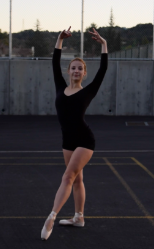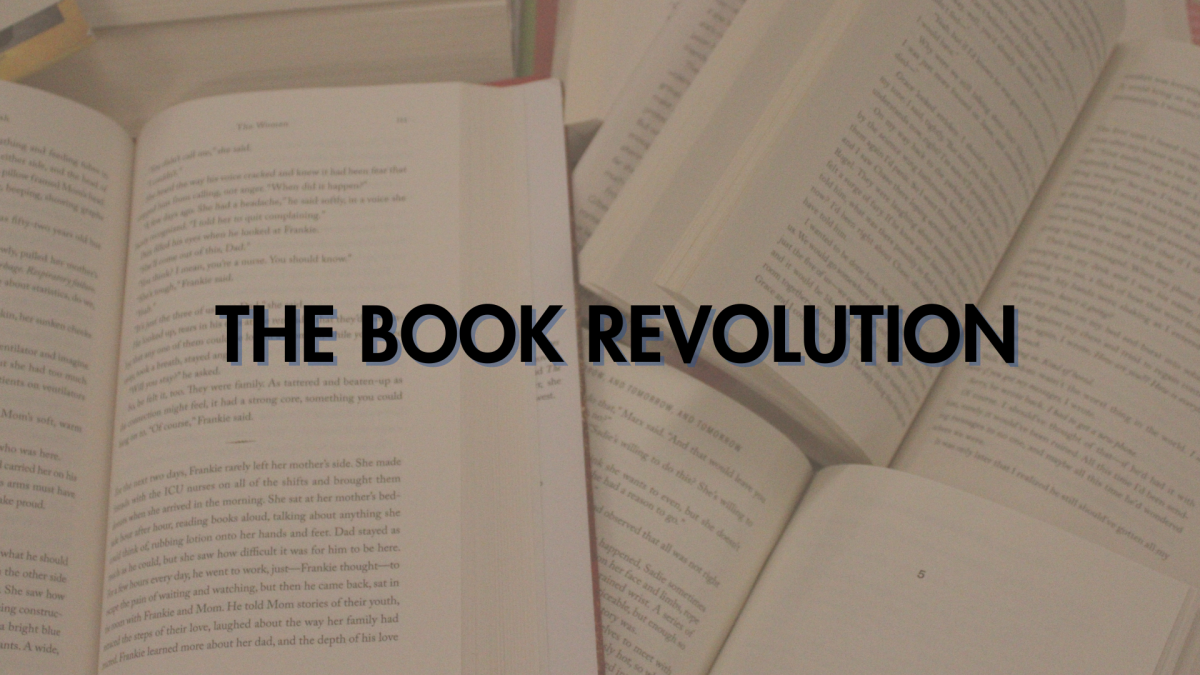Développé
In a développé, one leg is lifted up high into the air along with the hands, while the other leg lifts up onto its toe.
Port de Bras Devant
This movement focuses on the arms, as the dancer bends and drops their arms in front, then lifts them up to finish the move.
Fouetté
When a dancer does a fouetté they will first stand with their knees bent, a stance known as a plié, and then do several turns, ultimately ending with their legs and arms outstretched.
Pirouette
During a pirouette a dancer spins on one foot while raising the other, with an upright back and arms forward.
Of the ballet itself, Cheek now retains only the faintest of impressions. She was following demonstrators — teenagers on stage dancing the choreographed routine for the children to copy — so she never even memorized the choreography. Now, Cheek can only recall jumping across the stage.
Ballet has been a steady constant in Cheek’s life since she started at the age of two. As a baby, Cheek was constantly on the move, climbing over everything in the house. Once she started ballet, she finally had something to concentrate her energy on.
At first, Cheek enjoyed the simple act of moving and feeling pretty — like a princess. However, as she continued, ballet also encouraged self-improvement and hard work.
“I love that it’s an individual sport and even though as you dance with other people,” Cheek said. “It’s really about pushing yourself and you don’t have to compare yourself with anyone else.”
Now, Cheek practically cannot stop doing ballet: the motions that go into ballet dancing have been irrevocably ingrained in her body. When she stands, her feet naturally point outwards and she finds herself walking like a duck, a side effect of spending hours doing turnouts, or she ends up turning her legs outwards to extend her legs.
When she moved to New Mexico from California at age six, Cheek immediately changed dance studios. She found herself immersed in a studio of stern Russian ballet dance teachers and strict class uniforms. But just as she began getting accustomed to the strict structure of the class, she moved back to California.
And with a change of studios came a change in her growth as a ballet dancer. Where she once practiced ballet dance for over three hours a day, she now finds herself dedicating most of that time dancing for the Marquesas.
Still, ballet has become part of Cheek’s muscle memory — and without it, something feels wrong. In a way, she’s come to need ballet. Where she once found herself bored by classical music, now, once she thinks about the ways she can dance to it, it fascinates her. Not only does ballet dance help calm her down when she feels antsy, but it’s helped her improve her work ethic. Since she has always had to make time in her day for ballet, Cheek is now well-practiced in time management and stays organized so that she can focus on ballet when she wants to.
Cheek can still recall the room reverberate as her strict Russian choreographer, the type of coach who rarely learns his students’ names, elaborated on his precise expectations of the dancers. It was her freshman year, her last performance with that studio and her biggest solo performance to date — her first time receiving her own, special costume and being able to wear a tutu instead of a long, romantic skirt. To her, this moment was special. And despite how tough the choreographer was on her, she practiced as much as she could and did her best to overcome her weakness of not being able to memorize choreography. But when the hours of practice passed by and the performance itself loomed in front of her, Cheek found herself simply living in the moment.
She wasn’t a scared teenager — she was a ballerina. When the performance was over, she was sad that she would no longer be able to dance for this studio, but she had successfully carried out the biggest solo dance she had ever performed — successfully enough that her choreographer, who had always referred to her as “you,” called her by her name.





















